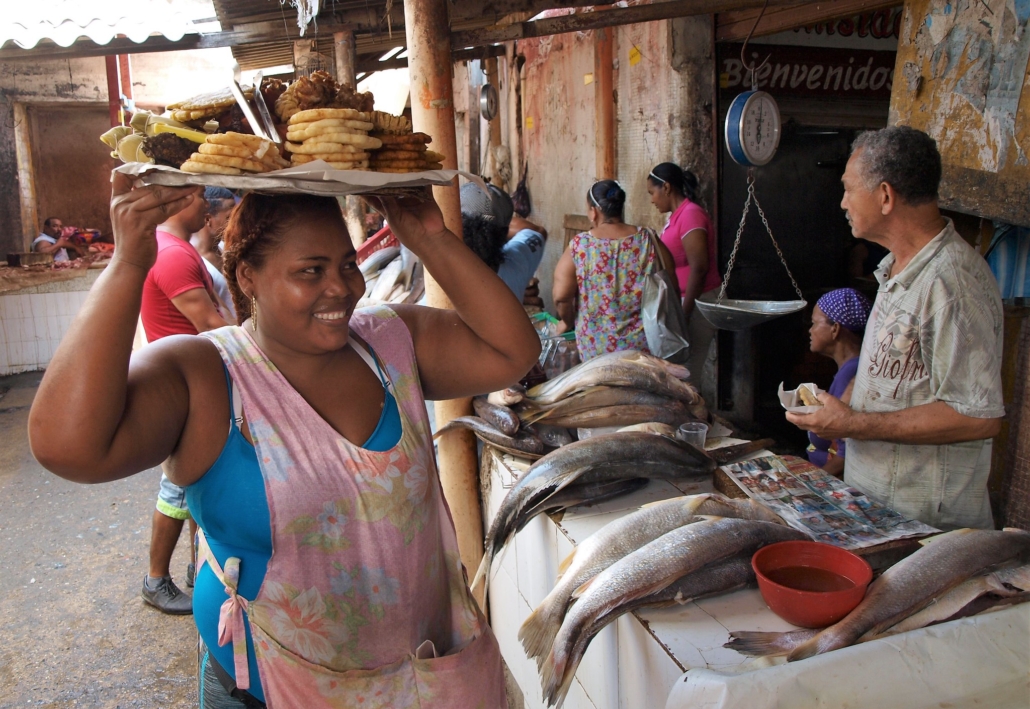The Future of Food Systems in Colombia
 A food system is a complex network of activities involved in getting food from the field to the plate. This includes the production, processing, transport and consumption of food. To ensure a streamlined and successful food system, the governance, economics and sustainability of food production all require attention, as well as food waste — all with the goal of ensuring the maintenance of individual, population and environmental health throughout the process.
A food system is a complex network of activities involved in getting food from the field to the plate. This includes the production, processing, transport and consumption of food. To ensure a streamlined and successful food system, the governance, economics and sustainability of food production all require attention, as well as food waste — all with the goal of ensuring the maintenance of individual, population and environmental health throughout the process.
Food systems have historically been intertwined with wider economic and social issues. Inequalities in the food systems of a country or region often reflect the inequalities found in society. This article will delve into the current and future food systems in Colombia, focusing on the Medellin and Valle del Cauca regions.
Current Food Systems in Colombia
Colombia is Latin America’s fourth largest economy with various fertile zones that allow it to grow a large range of products, including its major agricultural export, coffee. Find below two case studies portraying the struggles faced in local Colombian food systems, and the programs working towards a brighter future.
Case Study: Medellin
Medellin, Colombia’s second-largest city, lies within a fertile agricultural zone and has been proactive in implementing sustainable urban practices in recent years. However, it still faces challenges. Medellin’s municipalities are extremely fragmented, with a significant disconnect between rural and urban areas, as well as a distinct inequality amongst internal territories. All of which accumulate in food system inefficiencies.
In order to solve these issues, urban areas must have the tools for greater self-sufficiency while also building closer connections to rural areas. During the COVID-19 pandemic, when food shortages were choke holding the country, a municipal program of urban and peri-urban gardens called Huertas para el Abastecimiento, generated alternative food supplies and facilitated the production of secure distribution channels. This initiative mobilized 20 tons of food within the first two weeks of quarantine, when many were fearful of dwindling food supplies.
The influence of the City Council and organizations such as the Food and Agriculture Organization (FAO) has also been critical in the shift towards food security in Medellin. They have been instrumental in supporting farmers with transportation services, consolidating relationships between local producers and private companies, and redistributing food supplies to popular canteens where the most vulnerable populations find food. There are even digital Farmer’s Markets where networks of farmers and local citizens are communicating to establish a local supply of produce in Medellin neighborhoods. A combination of all these efforts has been beneficial in integrating territories and establishing a secure food system for Medellin communities.
Case Study: Valle del Cauca
Valle del Cauca is a region along the southwest of Colombia, hugging the Pacific coastline. An assessment by The New Economy for Food and Land Use (FOLU) in March 2022 found that only 58% of the area’s food needs were being met with malnutrition in the department’s capital, Cali, being particularly high. With a large proportion of the population relying on a diet of cheap, ultra-processed foods, Valle del Cauca has seen a rise in health issues such as obesity. Furthermore, the overexploitation of the region’s forest and wetlands for agricultural uses has led to land degradation and soil erosion, threatening future crop growth.
FOLU Colombia is an organization working to transform Valle del Cauca’s food system through sustainable growth and a regenerative agricultural economy. FOLU connects a coalition of unions, academics, private investors and government bodies to determine better land-use and food policies that take the growing environmental challenges into account. FOLU’s roadmap states that “the productivity of workers in the agricultural and forestry sector is one of the lowest in the Colombian economy and this sector has the highest rates of informal employment in the country,” stating that “a new economy of food and soil use would reverse this situation.”
The Future of Food Systems
Changing weather patterns are only going to enhance the challenges faced for food growers across the world. Coffee farmers in Colombia are already seeing temperature rises and drought take a toll on their crops — it is thought that these extreme weather events could reduce Colombia’s coffee production by up to 50%.
Building community-led, inclusive programs like those outlined above is crucial to breaking down barriers between different areas and forming cohesive, sustainable and resilient food systems in Colombia that supply sufficient food to all, even in the face of a changing climate.
– Rachael Cooper
Photo: Flickr
